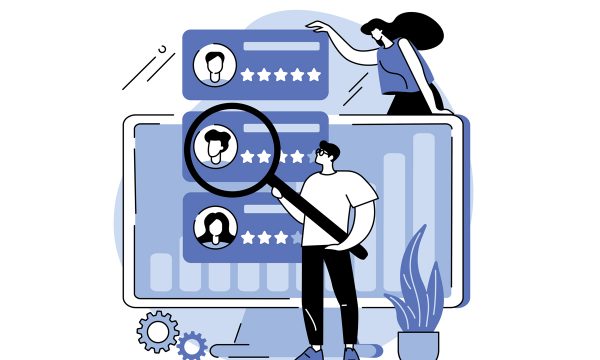Showing customers how used vehicles are appraised can help avoid negative experiences.
For both customers and Sales Consultants alike, the final presentation and discussion of the trade-in appraisal number is often the most awkward, nerve-wracking and contentious part of the entire sale.
Sales Consultants walk from the Used Vehicle Manager’s office to their waiting customer at their desk as if taking their last few steps on earth to the electric chair.
Inevitably, customers are often shocked and dismayed to learn their vehicle’s trade-in value: “I saw cars like mine on Kijiji for $30,000 — and my car is nicer than most of those!.”
Sales Consultants then go into defense mode: “Mr. Lee, that’s retail. We pay wholesale.” Worse, the Sales Consultant then starts listing all of the issues with the customer’s vehicle; “It needs front and rear brakes, front tires, ball joints, etc.”. This just amps up the customer’s frustration.
Consider adding several of the following strategies to your dealership appraisal process to facilitate a smoother delivery of the trade-in value, gain better acceptance of the number from customers and win more trade-ins!
Explain your trade-in appraisal process.
Most people don’t know anything about the vehicle appraisal process (how and why would they?). Most customers perceive that a manager quickly road tests the vehicle (or not) and then simply puts a value on the vehicle based on their opinion.
Allow the customer the choice of continuing on with the sale with their Sales Consultant or joining the appraiser while they examine and road test the trade-in vehicle.
The reality is that, yes, the vehicle is being appraised by a manager, however most are also using significant technology such as vAuto, CARFAX Vehicle Valuation Reports, EBlock, TradeRev, CarTradeGo along with training and experience to determine a trade-in value. Hence, the trade-in appraisal is a combination of people and expertise along with the industry’s most sophisticated technology.
Have your Sales Consultants take the time to provide an overview of the appraisal process and technology tools when having their first coffee with their customer (email me if you would like examples of visual tools). Add this information to your dealership’s website and social media. Also consider producing short videos:
- How we appraise your vehicle
- How we arrive at a trade-in value
Review the Vehicle Inspection Checklist.
If (as part of your used vehicle reconditioning process) you have a 90, 120, 150-point Vehicle Inspection, have your Sales Consultants show a laminated version of the checklist to every customer prior to the vehicle appraisal. This will inform customers as to how thorough your appraisal process is and specifically what the appraiser will be assessing.
Have the appraiser meet the customer before appraising the vehicle.
In most dealerships the customer never meets the Appraiser. Hence, having the Appraiser meet every customer prior to the trade-in appraisal will have your dealership stand out amongst the competitors. Customers are also more accepting of the trade-in value because they have met the Appraiser and trust and likeability has been established.
Allow the customer to join the appraiser during the appraisal.
This builds a relationship with the appraiser and establishes both rapport and trust in the appraisal process.
Introduce your appraisal and auction technology.
If your dealership employs tools such as vAuto, CARFAX Vehicle Valuation Reports, EBlock, TradeRev or CarTradeGo, introduce customers to your technology. If your dealership has an open concept tower (SUPERdesk) where the Sales Managers work, invite customers to sit behind the tower to see the impressive bank of computer screens and software used to establish the market value of their vehicle. Otherwise, simply show customers how you upload their vehicle information into cell phones and launch them onto nation-wide auctions.
Have ALL Used Vehicle Sales Managers within a dealer group bid on trade-In appraisals.
Why do we let buyers from all across Canada bid on customer trade-ins during the appraisal process but we don’t have the Used Vehicle Sales Managers within the same dealer group bid on trade-in appraisals?
It is certainly a known anomaly that a used Toyota RAV4 (for example) will sell within hours on the front line of a dealer group’s Honda dealership, but will sit for weeks just a block away at the same dealer group’s KIA dealership. Why? No one knows.
What we do know is that the RAV4 is worth more to the Honda Used Vehicle Sales Manager versus the KIA Used Vehicle Sales Manager within the same dealer group. Hence, why doesn’t the Honda Used Vehicle Sales Manager have an opportunity to bid? Why are we selling it to a Honda or Toyota dealer outside of our group instead? Why are we allowing competing dealerships (and groups) to bid ahead of your own group?
Why not have 20 Used Vehicle Sales Managers (within your own group) bidding on every vehicle instead of just one? At the very least, why not establish a 2-round bid system; all Used Vehicle Sales Managers within a dealer group bid on all appraisals via a closed internal auction, then the appraising dealership allows a second round of bidding to the open market.
If an outside buyer bids higher, then the Used Vehicle Sales Managers within the group have a final opportunity to match or beat the outside bid. Companies such as TradeRev and CarTradeGo can set dealerships up with their own internal appraisal auctions. If need be, it can also be done free with group chat.
Create a TradeRev/CarTradeGo Lounge.
If your dealership used live auction platforms such as TradeRev or CarTradeGo create a “TradeRev Lounge.” This could be an unused office space or a corner of a showroom sectioned off with a sofa, chairs and a large screen TV. When the customer’s trade-in is launched on the live auction platform, the customer is invited to sit down, relax with a coffee and watch the show. Over the 20-45 minute auction period, the customer sees live bids from all over Canada dropping on the screen. And, in some cases, they may also see the lack of live bids. Customers begin to quickly realize that it’s not the dealership that decides the value of their trade-in, but rather the market; bidders and buyers from coast to coast.
Have the appraiser present the trade-In value to the customer.
Instead of having a 3-month Sales Consultant nervously present the trade-in value, have the appraiser present the trade-in value.
Customers begin to quickly realize that it’s not the dealership that decides the value of their trade-in, but rather the market; bidders and buyers from coast to coast.
Wouldn’t it make sense to cut out the middleman (the Sales Consultant) and simply have the appraiser explain the valuation with confidence and expertise? Following an appraiser’s explanation (and customer acceptance or negotiation of the number), the Sales Consultant then provides a detailed payment-based proposal on the newer vehicle considered. The trade-in value is no longer the elephant in the room and the big psychological roadblock to selling the newer vehicle.













